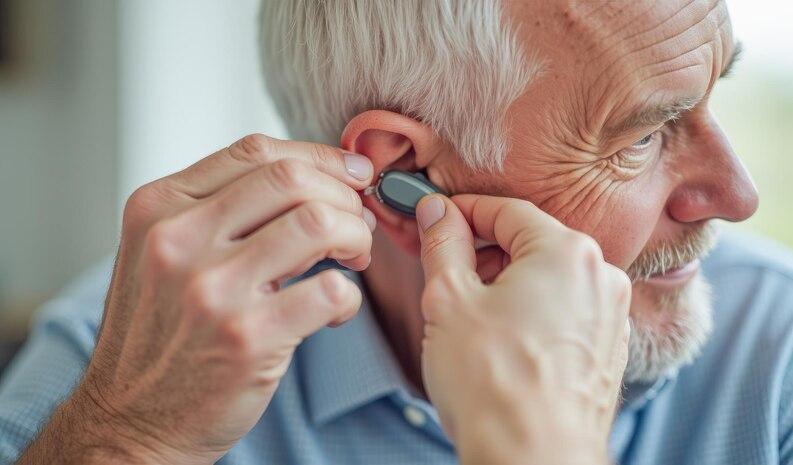Avoid These Common Hearing Aid Cleaning Mistakes

Why Cleaning Hearing Aids Matters
Regular cleaning is key for your hearing aids to work well. It keeps them in top shape for a long time. Here's why:
-
Wax and debris buildup can block the sound output.
-
Moisture or grime can damage internal components.
-
Bacteria and germs can lead to ear infections.
-
Unclean hearing aids may reduce battery life.
Experts say clean your hearing aids daily, or at least a few times a week. But how often depends on your lifestyle and earwax production.
Common Mistake #1: Using Water or Alcohol
Using water, soap, or alcohol on hearing aids is a big mistake. These liquids can harm the sensitive parts inside.
What to Do Instead:
Use hearing aid cleaning wipes from trusted places like Boots, Specsavers, or the NHS. These wipes are safe for delicate electronics.
Common Mistake #2: Ignoring the Tubes and Earmolds
If you have a Behind-The-Ear (BTE) model, pay attention to the tubing and earmold. They can trap moisture, wax, and bacteria.
Correct Method:
-
Detach tubing weekly (or as needed).
-
Use a hearing aid cleaning wire or air blower to remove moisture and debris.
-
Rinse earmolds with warm water (only when detached) and let them dry fully.
Wondering how to clean hearing aid tubes properly? Many hearing aid cleaning kits like the Boots hearing aid cleaning kit or the NHS hearing aid cleaning kit have a full guide.
Common Mistake #3: Skipping a Cleaning Routine Altogether
Some think they can skip regular maintenance. But neglecting this can lead to malfunctions or costly repairs.
Tip from Hearing Health Hub:
Set a routine! Clean your hearing aids every evening. This helps prevent moisture buildup and keeps them in good condition.
Common Mistake #4: Not Using the Right Tools
Cotton swabs, toothpicks, or paper towels might seem handy, but they can harm your hearing aids. They can push wax deeper or leave fibers behind.
Must-Have Tools:
-
Cleaning brush with a wax loop
-
Hearing aid cleaning wire
-
Vent cleaner
-
Drying container or dehumidifier
-
Hearing aid cleaning wipes
For all-in-one solutions, check out the hearing aid cleaning kit from Boots, Specsavers, or Hearing Health Hub.
Common Mistake #5: Not Replacing Wax Guards
Wax guards catch earwax before it gets into your device. But when they're full, they stop working.
Best Practice:
Check your wax guards every week. If they're clogged, replace them right away. This is crucial for ITE and RIC models.
Common Mistake #6: Cleaning Too Roughly
Hearing aids are very delicate. Pressing too hard or poking small openings can damage them for good.
Recommended Approach:
-
Gently brush around the microphone and receiver.
-
Use soft tools from cleaning kits for hearing aids.
-
Never force open battery doors or compartments.
Common Mistake #7: Not Letting Components Dry Properly
Many users reconnect parts before they're dry. This lets moisture into the electronics.
Smart Habit:
Let all washed parts air dry for hours or overnight. Use a drying container or hearing aid dehumidifier for best results.
Common Mistake #8: Forgetting to Clean the Microphone Ports
Users often forget to clean the microphone ports. They can collect dust and debris.
How to Clean:
Use a small brush (usually in your hearing aid cleaning kit) to gently sweep across the ports. Avoid inserting anything into the holes.
Recommended Products: Hearing Aid Cleaning Kits
Finding a good hearing aid cleaning kit makes cleaning easier. Some top picks include:
-
Specsavers hearing aid cleaning kit – Comprehensive and compact.
-
Boots hearing aid cleaning kit – Available in-store or online.
-
NHS hearing aid cleaning kit – Often free at local clinics or Hearing Health Hub support programs.
Each kit usually has:
-
Brush and wax loop
-
Cleaning wire
-
Vent cleaner
-
Drying capsule or case
-
Soft cloth or wipes
Quick FAQ
How do I clean hearing aids daily?
Wipe the device with a hearing aid cleaning wipe. Brush away debris. Store it in a dry place overnight.
How do you clean hearing aids at home?
Use tools from a hearing aid cleaning kit. Avoid water. Focus on the wax guard, microphone, and receiver areas.
Can I clean NHS hearing aids the same way?
Yes. Cleaning principles are the same for NHS, Boots, or Specsavers models. Just make sure your tools fit your model.
What about rechargeable models?
Use a soft brush and cleaning wipes. Never submerge or expose the charging ports to moisture.
Final Thoughts from Hearing Health Hub
Avoiding these common cleaning mistakes keeps your hearing aids in top shape. It ensures better sound quality and saves on repair costs. Whether cleaning NHS, high-end, or children's devices, a consistent and correct routine is essential.
At Hearing Health Hub, we're dedicated to helping you clean hearing aids correctly. We offer expert advice and the best hearing aid cleaning tools. Visit our online store or blog for more tutorials, kits, and support.
- Art
- Causes
- Crafts
- Dance
- Drinks
- Film
- Fitness
- Food
- Games
- Gardening
- Health
- Home
- Literature
- Music
- Networking
- Other
- Party
- Religion
- Shopping
- Sports
- Theater
- Wellness


